Case studies from the Glasgow School of Art exploring sustainability in action
Don't wanna be here? Send us removal request.
Text

Blise Orr
A Workshop for Master Interior Design
As part of the IDGSA MA course, I hosted a workshop designed to help students understand the materiality of objects within non-contextual spatial environments. The workshop encouraged participants to explore alternative ways of perceiving spaces, considering the multiple histories embedded in architecture through the objects within. It also examined the role of interior designers and the materials they choose, highlighting how ecology is deeply intertwined with design—far more than is often taught.
The workshop aimed to prompt students to rethink the realm of architecture by questioning objects in relation to their environments. We focused on interrogating objects through multiple lenses: Material, Speculative, Personal, and Historical.
Students worked with an archival object from the GSA archive, accessible on campus. By directly engaging with a plaster cast, they gained hands-on experience in various campus spaces.
As part of the process, students were tasked with creating digital models of the objects through 3D scanning. This exercise helped them understand how data transforms as it moves between different contexts. It also prompted reflection on the size of digital files they were generating and the environmental impact of digitalisation.

Beginning with their personal perspectives, students examined how different narratives alter an object’s meaning in new contexts, further distancing it from its original place and purpose.
Next, they considered the materiality of the object—tracing the origins of the plaster, the hands involved in its creation, and the processes of material extraction and transformation. This approach added depth to the object’s narrative.
Students then speculated on the object's potential future, manipulating its digital file to envision alternative states. This step encouraged them to engage with imagination and long-term thinking, helping them design for future scenarios in an increasingly unpredictable world.
Finally, to align these concepts, students researched the historical context of the object—how it came to be in the GSA archive and its original provenance. While historical research was familiar to them, the interdisciplinary approach of the workshop introduced new perspectives on how history can be interpreted and understood.
Blise Orr on LinkedIn
0 notes
Text





Starting a Climate Action Group
The Mackintosh Climate Action Network (The Mack CAN)
The Mackintosh Climate Action Network (The Mack CAN) was started as a response to the infinitely complex web of information, disinformation and fluff around the Built environment’s response to the climate emergency. As students, we have been placed in a unique situation to embrace the responsibility of being the new generation of architects being trained to be especially socially, civically and environmentally conscious individuals. However, this perspective is often daunting. Many companies and products still undergo a huge degree of greenwashing and empty promises.
This year a group of students from the Mackintosh School of Architecture decided to get together to equip students with the knowledge and skills to combat this wave of information and discussion that is being thrown at them. Our mission is to increase the climate literacy of the student body and to instil a critical and even cynical mindset of materials, information and best practices.
However, our challenge thus far has been making what is good, and attractive. It’s not enough to highlight the benefits of sustainability; it’s about making the cause compelling enough for students to prioritise it. Making information accessible and compiling databases is a challenge. I am confident this plagues even many MNCs. So far we have had mixed reactions to our actions. Many of our strongest supporters are practising architects, industry professionals and fellow ACAN student groups. Our target group, however; the student body is largely unmoved. I do not see this as the end of the road, but rather as a challenge to evoke a sense of solidarity around climate-focused initiatives and events. Academia is a test bed for ideas, and the lukewarm response is also an indicative reflection of the wider indifference towards a critical understanding of our roles in climate action. If our team can galvanise the student body it will mean we are on the right track to replicate it in practice.
#sustainability#climate crisis#ethics#glasgow school of art#circulareconomy#design#reuse#architecture
3 notes
·
View notes
Text





Hayley Dawson, Master of Letters in Art Writing
The Histories and Lives of Working-Class Glasgow
Winner 2024 Graduate GSA Sustainability Degree Show Prize
I have just completed the Art Writing MLitt, studying part time over the last two years. Throughout this time I have focused on what it means to be working-class in the creative sector, particularly within the Glasgow arts scene. I have written longer form pieces exploring my family’s history within the Glasgow area, as someone who still inhabits many of the same areas they did. I have also published written pieces in full Scots in an attempt to subvert the assumed notions of knowledge and power and how language is represented in spaces of academia. My practice documents my research and struggles to fit in as a working-class person in a predominantly middle-class art world, and the ways in which working-class culture and community helps me to process this divide.
I also work with sculpture; using ceramics, fabric and casting to explore and document the lives and experiences of the working-class and how objects feature heavily in our lives. I used ceramic wall hangings to explore Scots language and the need to preserve my own mother tongue. I have worked with the Agnes Owens Archive, a recently established archive of Owens’ life and work, who was critically underknown in her life time and is only now gaining recognition posthumously. I made a bust of Agnes as part of a two person show exploring her and Alasdair Gray’s work. The bust was my attempt to reclaim statues and busts, often reserved for important figures, for the working-class person. I also made a ceramic sculpture of a library as part of the exhibition. This spoke of the places working-class people feel comfortable in, as opposed to academia and other institutions. A lot of my work has discussed the discomfort that myself and other working-class people feel in places such as universities. The library functioned as one such physical embodiment of the topics I discuss in my writing.
Recently I have focused on looking at class through the lens of time and grief. My granda passed away during the course and I had already been making work about his career as a stereotyper within the wider scope of my family history. It felt cathartic to continue writing about him and to cement his legacy, which would otherwise perhaps only be known by his family and friends. To continue to expand the context of a cannon of other working-class people who are beginning to be acknowledged for their important contribution to arts, creativity and the wider world.
I would also like to share with you some of my writing.
A hopeless case
Yer a hopeless case (insert name here): This is whit maist Scottish working-class weans are telt fae almost as soon as they kin hawd their heeds up, or similar words tae this effect listed below -
Ye’ll never amount tae onythin Stick in an get good grades an ye’ll probably be awrite You’ll no be rich or famous, dinny be sae stupit University’s no fir the likes ae us We’re working-class, we go tae work Dinnae haud yer breath Yer no pregnant or in the jail, so yer daein well Ye’ll need tae get a wee pert time joab if yer wantin tae buy yersel onythin I canny afford tae keep ye Yer no livin here rent free Who dae ye think ye urr We canny afford it Ye’ve tried tae get intae the uni wance, is that no enough Whit aboot just haein a wee faimilie an a man Its no much but its somethin It wis a gid enuf job fir me Ye’ve goat ideas above yir station lady Yi need tae earn yer keep Theres nae hope fir ye Am afraid ye don’t huv the right qualifications fur this joab Yer no exactly whit we’re lookin fur
Ye’ve goat great potential but Dinnae get ahead iv yersel Ye’ll be oot on yer arse if ye don’t get a joab quick smart How will ye pay yir bills Dae ye no jist wantae stay at hame Yer a waste of space Ya space cadet Yer tuned tae the moon Whit dae ye think this is, a hitel Ye work until ye drap Live tae work Go tae the heedies office Yer disturbin the rest ae the class thit wantae learn Qualifications areny everythin You dinnae need qualifications tae lift hings Have you no goat a brain in that heid ae yours Hawd yer wheesht Children should be seen an no heard Dinnae aim too high There wiz a mair experienced candidiate Ye’ll end up in the jeil Yi need tae stoap speakin scots if yi wantae get aheed Theres nae hope fir ye
GSA Showcase
0 notes
Text




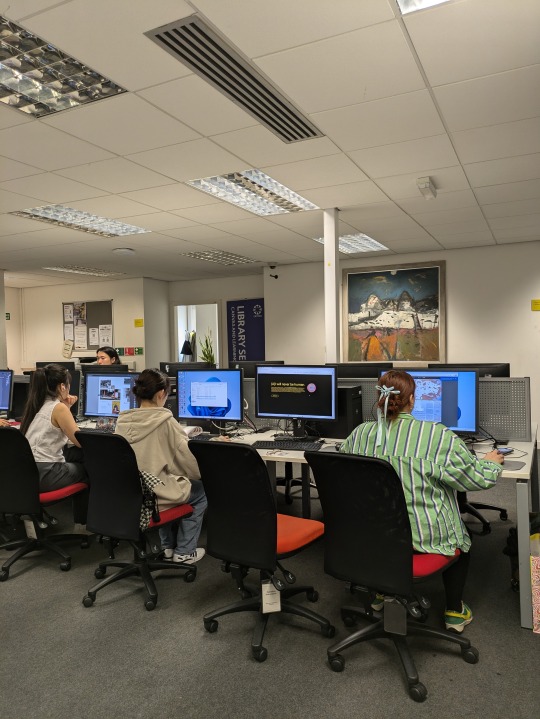







Abie Soroño, Master of Letters in Curatorial Practice (Contemporary Art)
(A)I will never be human
“(A)I will never be human.” hosted through feministiai.org defines Artificial Intelligence or AI as a branch of technology and computing that aims to mimic human qualities such as creativity, cognition, recognition, speech processing, translation, and image recognition. The research interrogates the inner workings of AI, questioning the sources and biases of the knowledge upon which it is based. To democratise AI knowledge, the project collaborated with four artists whose practices intersect with cyberculture, artificial intelligence, glitch feminism, cloning, various avatar formats, and feminist theory. For the project, Abie commissioned two works from each artist namely Eekie Watson, Elle Crawley, Christina Lopez, and Rona Luug. Two collaborative works were facilitated that utilised the Exquisite Corpse technique in illustration, as suggested by Rona. This technique, traditionally used in drawing, was translated into digital formats. The process involved starting with two separate images, which were then passed to Rona for editing, then to Elle, Christina, and finally to Eekie for finalisation. Keywords for the prompts were chosen that revolved around surveillance capitalism, the body, avatars, clones, and collaboration. A variety of mediums utilising AI technologies were welcomed, including AI-generated art, datasets as art objects, AI software/tools, speculative AI experiments, and multimedia installations. Interdisciplinary, community-focused, and open-source projects were particularly encouraged, ensuring all works were documented and displayed through 2-D screens. (A)I will never be human is a series of static digital works displayed in 50 adshels (bus displays), computer screens, standalone electronic display panels, and a website that was launched simultaneously from 20 July - 27 July 2024. In designing this exhibition, a guerrilla marketing strategy was employed to maximise public engagement. Sites were strategically chosen near knowledge and research centers such as the Mitchell Library, University of Strathclyde, University of Glasgow, Glasgow School of Art, and the Gallery of Modern Art Library. Sites in the south side were also chosen, specifically near Tramway and other large art organisations. Apart from that, the displays were concentrated around the city center and near offices, places that would usually have a high concentration of footfall during the times and days the works were displayed from 8 am to 6 pm daily such as Buchanan St. and Sauchiehall St. Key considerations for these public displays included selecting locations that would respond to and interact with their surroundings, ensuring a dynamic and contextually relevant presentation.
To enhance accessibility and reach, a website was simultaneously launched with the physical displays. This approach was crucial in the strategy to make the project information accessible and widespread, especially for those without mobile devices. Through this creative, low-cost strategy, the aim was to engage audiences through unconventional channels for public art, mimicking how large brands connect with audiences by providing targeted campaigns designed to capture attention and spur action. Mapping out AI and the diffused model
Interestingly, the project's diffused model of distribution relates to stable diffusion, an AI model that translates text to images. This parallel underscores the project's engagement with contemporary AI technologies. By employing digital displays across Glasgow, artists and designers were positioned as collaborators operating at the intersection of feminist theory, decolonial perspectives, and AI technologies.
To further contextualise this project, Glasgow was honoured as a pioneering city in two ways: as the UK's first aspiring Feminist city and as one of the UK's top 10 AI-ready cities. Finding overlaps in these serendipitous connections was a significant part of the process in developing the project. The initiative focuses on:
Developing AI models/datasets from underrepresented cultural perspectives
Examining bias and power structures embedded in current AI systems
Using AI as a means to reclaim narratives erased by colonialism and patriarchy
Facilitating collaborative initiatives centered on feminist AI development and education
A part of the takeover, a cookie tour was also organised on the final day of the campaign, the 27th of July. This cookie tour explores the idea of cookies and data and how this all relates to the surplus of daily information being collected. Our everyday behaviours continually generate a stream of behavioral surplus, which is mapped as data in larger datasets; this surplus, as Shoshana Zuboff articulates, fuels the engine of what she terms "surveillance capitalism." The project aims to highlight how the handheld devices we carry and the computers we use contain vast repositories of information and data, often collected surreptitiously by third parties through location tracking and stored cookies. These digital "crumbs" create traceable trails of our online behavior, which are then utilised by corporations to train and sell larger systems under the umbrella of artificial intelligence.
So, whose?
As AI continues to permeate all facets of contemporary society, the question was posed: whose perspectives and experiences are actually shaping these world-building technologies? Through this project, artistic practices reimagining AI's applications in contemporary art through an intersectional feminist lens were foregrounded, aiming to amplify voices historically marginalized and excluded from AI's development.
The digital works curated interrogate AI's false claims of objectivity and neutrality, revealing how these technologies often entrench Western colonial hierarchies, masculine paradigms, and oppressive biases around gender, race, class, and bodily norms. In doing so, the aim was to open up radical possibilities for recoding AI from pluralistic, decolonial feminist standpoints rooted in principles of justice and collective liberation for all people. Diverse contemporary practices were explored – data interventions and counter-narratives in language and visuality that work to deconstruct AI's colonial capitalist logics and encode pluralistic intelligences. Crucially, the displays were centered on revolutionary worldviews like cyberfeminism, xenofeminism, and glitch feminism.
In the research, it was important to acknowledge AI's origins in coding, pattern, and logic-based systems, which can be traced to women's work. The origins of AI and the formal logic it was based on, known formally as "Syllogism," a concept by Aristotle, were traced. As well as Ada Lovelace's views on early computing and how then, pattern-based work related to logic was associated with women's work. This deductive reasoning, where a series of statements with an assumed truth concludes, combined with processes mimicking human mental processes to perform specific tasks and solve individual problems, constitutes early AI systems. In recent years, developments have focused on creating neural networks that imitate the functioning of neurons in the brain, combining them with genetic algorithms. (A)I Will Never Be Human: Reimagining AI's Societal Impact
The title chosen for the project, "(A)I will never be human." is influenced by the readings amassed and how the mention of the phrase "...if it will be human" or "will it ever be human?" became a recurring pattern. It also reflects the current landscape of AI, where it becomes increasingly likened to how humans act, think, feel, respond, and look. This title and the project as a whole question the nature of AI and its relationship to human cognition and behavior. In curating this exhibition, artists who collectively posit AI's transformative promises as a catalyst for decolonised futures were brought together. Their work resists AI's perpetuation of top-down control and exploitation, instead aiming to democratise AI knowledge, reestablish its power distributions, and create safe cultural spaces for marginalised communities. By reclaiming autonomy over technological narratives, this exhibition was positioned to activate AI as a frontier for forging new cultural logics premised on the emancipation of all oppressed peoples. The aim was for the public to emerge with fresh perspectives on AI's current defaults and, more critically, a renewed sense of society's vital agency in collectively reimagining AI.
0 notes
Text


Siyuan He, MArch, Mackintosh School of Architecture
THE SILENT VOICES: Slavery History heritage City Guide Reconstructing The Urban Cultural Heritage
Mackintosh School of Architecture, Glasgow School of Art, Master of Architectural Studies (Creative Urban Practice Pathway) Student: Siyuan He Advisor: Dr Luca Brunelli
The Atlantic Slave Trade was an important historical event that also brought about great development and transformation to the European economy, and the cultural heritage it left behind has an indelible mark on the city. This strategic design project aims to investigate how cultural heritage related to the Atlantic slave trade, such as historic buildings, streets, squares, can be reconstructed in the urban environment, (using Glasgow as a case study). Driven by the concept of dark tourism and the theory of collective memory, through the study of several different dark tourism projects, and the reading and analysis of literature and data, an attempt was made to find a spatial intervention strategy appropriate to the city. Revealing to tourists and residents alike that the great economic gains made by European traders came at the cost of great human suffering and loss of life of African slaves. The project emphasises the need to acknowledge this dark chapter of history and calls for spatial interventions to implement educational and commemorative significance and promote a deeper understanding of the dark history. Future design directions should be developed to spread to other cities in the UK and even other countries in Europe involved in the Atlantic slave trade to form a regional network, but also to the continuation of other historical events to create a wider discussion of the history involved and its contemporary impact.
Contact: Email LinkedIn Insta
0 notes
Text






Alizeh Khan, MDes Design Innovation and Service Design
Inclusive Food Systems: Empowering Community Initiatives for Culturally Relevant and Equitable Food Distribution
As food insecurity rises globally, a crucial question arises: How can we ensure that marginalized communities receive food that not only meets their nutritional needs but also respects their cultural preferences? The “Food Connect” initiative confronts this issue by exploring how community-led initiatives can bridge gaps in food redistribution, with a special focus on delivering culturally appropriate food to underserved populations.
Traditional food systems often fail to address the diverse needs of marginalized communities. While many conventional models emphasize basic nourishment, they frequently neglect cultural relevance, resulting in significant gaps in food distribution.
To address these gaps, the initiative introduces an innovative solution: an integrated platform that connects local programs, CSR organizations, and marginalized communities. This approach aims to create a more inclusive and sustainable food system. By providing tools such as recipe cards and a dedicated website, the initiative helps communities prepare meals that align with their cultural traditions. These resources not only enhance nutrition but also reduce food waste by ensuring that donated food is both wanted and effectively used, fostering stronger community connections.
The project exemplifies how community-driven solutions can address systemic issues in food distribution. By identifying existing gaps and offering scalable, inclusive solutions, it challenges traditional models and fosters important conversations about food justice and social equity. In a world grappling with food insecurity and cultural misalignment, this initiative emerges as a timely and transformative response.
This effort demonstrates the power of design and innovation in tackling deep-rooted social issues. By prioritizing the needs of marginalized communities and encouraging collaboration among diverse stakeholders, it reimagines the future of food distribution in a culturally sensitive and environmentally responsible way. As the urgency for food justice escalates, this project underscores how thoughtful, community-centered design can drive meaningful and lasting change.
Want to learn more about this project? Showcase Email
1 note
·
View note
Text





Why is so much bread thrown away?
Hanqi Tang, MDes Circular Economy
Why do people throw away 20,000,000 slices of bread daily in the UK, despite its resulting 584,000 tons of CO2 emissions? The main scenario for bread waste is in households, with the root cause being the low value of individual slices, leading people to disregard them.
After engaging with locals, I discovered that much of the discarded bread is not due to spoilage, as well as these breads maintain considerable nutritional value even past their prime. By reviewing related literature, I discovered an opportunity: leftover bread, rich in carbohydrates, fiber, and protein, can serve as substrates for cultivating biomaterials like mushrooms, that is, mycelium.
This poses an interesting speculation: what if we could assign greater value to surplus bread by using it to grow mushroom and mycelium, thus changing how people dispose of bread? By establishing a local, digital network based on APP called "BreadMyco," residents could donate their leftover bread to participating community gardens. These gardens would then use the bread to cultivate mushrooms and mycelium. In return, residents would receive mushrooms, adding value to surplus bread. Additionally, Mycelium companies could also procure materials through BreadMyco.
This design linking local residents, community gardens, and mycelium material companies into a hyperlocal network focused on reducing bread waste.
#waste#circulareconomy#mycelium#bread#reuse#recycling#ethics#design#glasgow school of art#climate crisis#sustainability
0 notes
Text









Yihao Li, MLitt Fine Art Practice
Embodied Landscapes: The Intersection of Anatomy, Ecology, and Technology
My developing project, “Embodied Landscapes,” explores the interconnectedness between the human body, the environment, and the impact of technology on our physical and social structures. I tried to examine the inner body’s imagination, sensation, and reflection from the perspective of visuals and their embeddedness within the awareness structures. The goal was to use artistic methods to research topics commonly examined within an academic framework. The project focused on aspects of bodies that have been/are excluded or made invisible within contemporary and historical discourses. The work, “Untitled (Somatic Circuit),” challenges the boundaries between organic and inorganic forms, drawing on sustainability, environmental awareness, and social justice themes.
“Untitled (Somatic Circuit)” presents a complex and evocative installation that bridges the intersection of anatomy, material literacy, and conceptual exploration. The assemblage of materials—including organic elements, mechanical components, and digital elements—creates a compelling narrative about the human body, its cultural representations, and the intricate interplay between nature and technology. The core concept behind this piece is the notion of the body as a landscape—both a literal and metaphorical terrain that bears the marks of environmental degradation and technological intrusion. Combining elements of natural and synthetic materials reflects how the human body is not just a physical entity but a site of ongoing negotiation between nature and culture, biology, and technology.
As a recurring motif, anatomical forms, particularly the spine, symbolise the backbone of human existence, connecting physical structure with metaphysical ideas about support, strength, and vulnerability. Incorporating branches, wires, and technological elements emphasises human innovation's invasive and sometimes destructive influence on the natural world.
The installation features a striking juxtaposition of natural and industrial materials. The organic forms, such as branches and bones, contrast sharply with the mechanical parts, like bicycle wheels and digital elements. Natural wood represents the organic, untainted state of the environment, while metal and plastic signify industrialisation and technological advancement. The digital elements, including video projections and mechanical components, underline technology's omnipresence in modern life.
This contrast emphasises the tension between nature and technology and invites viewers to reflect on the body's place within these realms. Incorporating anatomical structures, such as the spine and pelvis, rendered in transparent or semi-opaque materials evokes a sense of fragility and transparency. These elements are strategically placed within the installation, allowing the viewer to navigate around them, creating a dynamic and immersive experience. The viewer's movement becomes part of the work, engaging with the physicality of the materials and the space. One of the innovative aspects of this work is the use of translucent glass wax to cast vertebrae, creating a haunting visual effect that blurs the lines between natural and artificial, past and present. The glass wax casts are suspended, interacting with the natural wooden elements engraved with ancient symbols, thus merging historical narratives with contemporary concerns
The materials used in this installation were carefully selected to minimise environmental impact and embody sustainability principles by employing found objects, reducing waste and imbuing the work with a sense of history and continuity. The branches, sourced from discarded remnants, represent the resilience of nature, yet its scars and marks also tell a story of environmental exploitation and human intervention.
The metal and plastic components sourced from electronic waste and scrap yards reflect the pervasive presence of technology in our lives and its often detrimental impact on the environment. By repurposing and upcycling these materials, the work challenges contemporary consumerism. The installation is designed to provoke a dialogue on environmental stewardship and the ethical responsibilities of human beings in the face of ecological crisis.
Moreover, the work engages with social justice issues by questioning how environmental changes impact different bodies (both human and non-human). The depiction of the somatic remnants, an essential yet vulnerable part of the human anatomy, serves as a metaphor for the marginalised communities most affected by environmental degradation and technological advancements.
The artwork aims to evoke a strong emotional response by making the invisible effects of environmental and technological changes visible and tangible. The delicate balance between organic and synthetic materials mirrors the fragile state of our current ecological and social systems. The viewer is invited to reflect on their role in these dynamics and consider the broader implications of their interactions with the natural world and technological advancements.
The project also challenges the viewer to think critically about the sustainability of our current practices and the social inequities exacerbated by environmental issues. By engaging with these themes through physical and digital mediums, the work fosters a deeper understanding of the interconnectedness of all life forms and the urgent need for a more equitable and sustainable future.
“Embodied Landscapes” is an art project and a call to action. It underscores the importance of sustainability and social justice in contemporary art and society. By bridging the gap between the body, environment, and technology, this work offers a profound commentary on the state of our world and the imperative to protect and preserve it for future generations.
Yihao Li is a visual artist and researcher in Glasgow, UK. His practice spans drawing, sculpture, and installation art, focusing on East Asian art, Orientalism, and fascination with the interplay between form and material. Start with a question on the physicality and materiality of sculpture, which necessarily invoke bodily relations. His work employs various materials to interpret and translate the concept of the absent body within the realm of pre-empirical knowledge. He articulates a symbiotic relationship between form, materiality, and cultural identity as a testament to the ongoing exploration of artistic expression and the complexities of human existence.
Contact information
Email
07551052358
Social media information
@leonardlee0730
1 note
·
View note
Text


A place in my heart
Aliya Prichard-Casey, MLitt Curatorial Practice & Lilian Evans, Master of Fine Art
A ticket stub, a nail, a cigarette packet – a discarded object. All objects we held in our hands but not in our hearts. It is the shared attraction to such from which this exhibition came forth.
Thus, a place in my heart exists as a collaborative exhibition brought forth by curator, Aliya Prichard-Casey and Glasgow based artist, Lilian Evans. Embracing the context of the Pipe Factory and its history of dereliction, this project draws upon the catalyst for such: the humble rolled cigarette, and the primary reason for the downfall of clay pipe production worldwide, and subsequently, the cause of the Pipe Factory’s dereliction.
This exhibition, exploring the relationships we hold with our material surroundings, confronts our tendency to consume, use, and discard whilst reframing the object and its potentiality.
Framed through Moments Of Encounter, this exhibition acts as a marker of a point in time, a position in place thereby unveiling the interconnection, the traces, between all people and things.
Utilising attachment and its polar, abandonment, to centre the consumerist tendency to use and discard, this exhibition highlights the human predilection to assign face values to objects thus cementing the brevity of their existence as objects of value. This exhibition, in its repurposing of discarded materials, brings forth the materiality embedded within these objects and finds value for them as art.
More on the website, Instagram and here
0 notes
Text









Ailsa Hutton, Winner MSA Stage 3 award 2024
The Hidden Network of Mycelium Exploring the impact of micro-ecosystems on macro-ecosystems
The Hidden Network of Mycelium Exploring the impact of micro-ecosystems on macro-ecosystems
The Highland Clearances caused mass deforestation and contributed to the erosion of traditional Gaelic culture and life in the Highlands. The process of deforestation has contributed to the loss of biodiversity and ecological degradation in Scotland. These impacts are being fought by small communities like on the Knoydart Peninsula.
There are challenges that the Knoydart Forest Trust are facing when rewilding Knoydart. The first being, planting sites are becoming so rural that the team have no road access and must walk to site. This takes up too much time to plant many trees. Another issue is poor soil structure which covers most of the highlands. This is a problem because plants struggle to grow and mature in this soil, so there is no guaranty it survives long enough to enrich the landscape.
My proposal is a semi-permanent structure to house the team during planting season on site and will also focus on improving soil structure ensuring success of the new forest. There are challenges and difficulties building in rural areas. Having an in-depth knowledge of the community is crucial to this design. It was massively beneficial to understand the scientific processes that happens in ecosystems as it pushed me to approach this project with a fabric first method. Fully understanding of my own impact.
The design is a physical interpretation of reciprocity in ecology as it demonstrates that attitudes of responsibility for our planet aren't a 'one-way' relationship. If people give to the earth, the earth will nurture people back. Nature doesn't work as independent parts, but instead as a whole machine that needs every part of it to work and thrive. People are a part of that machine, and it is essential for generations to understand this.
Reciprocity is a transaction of mutual gain.
#sustainability#reciprocity#ecology#architecture#design#glasgow school of art#climate crisis#nature#Mycelium
0 notes
Text

Warakorn Sornmasthaveeroj, Communication Design
The Cycle of the Corruption of Power
The democracy regimen in Thailand is complex in balancing the polarities of monarchy, the previous system, and the blooming of democratic thinking in the new generation. After the Siamese Revolution in 1932 and the victory of democracy, the conservatives desired to maintain their power and right to control the country by using political intervention to corrupt power. This cycle was supported by their companies, such as monopoly capitalists and the military, to strengthen them. Even though the election could prescribe the leader, it does not seem the solution for people to go against the authority because they always plan to come back or use a trick to make the election void. People could not express their opinions and dreaded military weapons, making Thailand's democracy regimen just a righteous authority to define their new identity to the civilized world.
The final project illustrated the cycle of the corruption of power, which describes how high-class status comes to power and the way they deep-rooted the problem to return to power in the future. The narrative was connected with image-making and the meaning of the method and material. Corruption is a disgusting parasite that consumes and takes a country's development away. It relates to the discharge printing technique, which removes anything the discharge paste touches. To make the method more meaningful, each character in the narrative represents different discharge agents. Natural discharge was used to screen and paint for the people's illustration, while chemical one created greedy politicians and corruption.
In terms of production, all fabric for making a banner was dyed using the lift-over logwood chip from a furniture company in Belgium and a natural mordant method. In addition, the left-over dye bath could still extract the lift pigment and be used for future painting. The discharge paste base uses natural ingredients that are not harmful to the designer and the environment.
Warakorn Sornmasthaveeroj
Instagram
Website
1 note
·
View note
Text













Project Title: The North Within The North
Project Location: Luleå, Northern Sweden
Beatrice Rogojan, MSA stage 5 Sustainability Prize: Commended 2024
This Design Thesis explores the viability of implementing an adaptive-reuse strategy to address the unsustainable consequences of Luleå’s densely commercialized urban core, especially in its Arctic setting. The objective is to transition its consumer-driven urban activity into a community-centered one by repurposing one of its most valuable yet declining assets: the first indoor shopping mall in the world, ‘Shopping’, designed by Ralph Erskine.
While researching the history and failures of Luleå’s urban core parallel to the Shopping’’ decline, this project developed into an antithesis to consumerist-focused practices, which alienated the sense of local community and culture in Luleå. Furthermore, this thesis looks at enabling an anti-consumerist approach on all design levels, thus repurposing an existing valuable asset, yet a declining shopping mall emphasises on adopting sustainable design practices by prioritising mindful resourcefulness and advocating for fewer new constructions in the built environment.
Hence, this project serves as a provocative call to action, urging the construction industry professionals to build less and use existing resources more across all facets of design while actively involving themselves with local communities and contextual social and cultural nuances for a deeper understanding of the local needs.
Developing an adaptive-reuse strategy for Ralph Erskine’s building is the most successful facet of this thesis. It focuses on revitalising the building’s lost architectural character while integrating a new layer of contemporary architecture that brings value to its existing fabric and aims to benefit future generations. This thesis, more or less like forensic architecture, investigates the historical architectural layers of the building and embraces its architectural qualities, however it rejects the inappropriate renovations done over the years in Erskine’s Shopping. The proposed design strategy retains original elements while the new additions aim to accentuate them even more.
The most resolved aspect of this thesis is the reconstructions proposed in line with Erskine’s vision and bioclimatic design strategy, aiming to bring back the lost heritage through innovative construction methods and materials with three different types of 3D printing processes. The emphasis on considering life cycle assessment throughout the design process is evident through the material choices, fostering an anti-consumerist mindset that values reusability, recycling, and efficiency.
Furthermore, the new layout of the floorplans successfully brings back Erskine’s utopic idea of a city within a city, where a generous area is dedicated to “informal spaces” where the local community can genuinely use the building as an indoor public square or indoor street for conversation and interaction, which is a crucial design need in a harsh climate such as Luleå’s.
In conclusion, this project serves as a provocative call to action, urging the construction industry professionals to build less and use existing resources more across all facets of design while actively involving themselves with local communities and contextual social and cultural nuances for a deeper understanding of the local needs
GSA Showcase
LinkedIn
#design#sustainability#climate crisis#circulareconomy#glasgow school of art#ethics#architecture#adaptive#reuse#Lulea#urban
2 notes
·
View notes
Text





Helena Powell, Textile Design
A Place I Call Home
I wanted to supply a summary of the different ways that I have reviewed different dye methods to add colour to a piece of woven fabric, with in mind keeping track of water and dye wastage, with dyes being one of the significant hazards in fashion and textures; from ecological species being new extinction from natural dyes to current pollutions levels and heavy metal ions rising in riverways. The measurements for water are a work in progress, but exploring the content of dyes and dye wastage with different methods has been through quantitative measures, with measuring and computer analysed data.
In addressing this, I aimed to look at small batches to explore the minimum amount of dye needed to explore colour. Each trial stored acid dyes to reuse these chemicals and limit their passage through the water system; I have been reusing water and the mixed pigments for acid dyeing throughout the year. I have not quantified the data but am keen to carry on this practice and find ways to be able to.
My primary research into different dyeing methods also took me to digital printing and air-dyeing, comparing different solvent and transfer methods with dye. I chose to try some warps with digital printing as a way to dye fabric, using procion dye and a seaweed compound to bind the fibre and dye. Although these different steps are expensive, they allowed a more contemporary approach to printing on warps, with limitless colour, limiting steps needed in the dyeing process in terms of dye mixing, and exploring the consumption of power and water during the process in addition to minimal industrial waste and carbon dioxide emissions compared to other traditional printing processes. This was compared at my university with exploring the print wastage for the past three years, with the student-accessed screen printing and dyeing having 180kg of dye wastage and the Center of Advanced Textiles producing 92kg with the same time scale, a 49% decrease in dye wastage. we have measures that each scarf requires 11ml of dye, the equivalent of a teaspoon and a half.
My project is based on colour and form inspired by elements that I associate with the places I call home; the design process has been a mixture of digital and analogue, with the ability to compare different colour hues and how they interact. From summer research with my heritage and where my family currently lived, I wanted to explore fibres that my great-grandfather used to work with in Thuringia, Germany, before World War One. He was from a weaving area where he used to work with traditional fibres, specialising in weaving linen and silk. In addition, I have worked closely with The Sudbury Silk Mill through the Mill Shop, which is only 30 minutes away from my parents, where 52.5kg of deadstock was donated to work. Working closely with silk has been something I can only relate to as working with my roots, understanding the importance of silk, how big a part that industry is in the area where my parents are, and the family background of how it has impacted us. During this project, I explored different alternatives to silk, looking at carbon emissions for the process, where the silk is travelling from China to be spun in Switzerland or Italy before being sold in England. My research regarding peace silk explores the supposed benefits of Ahmisa, with the moths being allowed to hatch and the silk being harvested. However, this has not been the case for most with testing on the moths to review parasites and additional starvation of the caterpillars. For this reason, I wanted to look at the ethical supply chain of where I am getting the silk from, looking at supporting the displacement of the traditional mulberry silk industry in China; this is one of the reasons that I wanted to work with this particular supplier. I am still exploring different silks with ethical concerns and am currently exploring organically marketed silks from Ecuador and am in the development process of exploring other options.
With the combination of mathematically calculated striped and hand-painted yarn, I wanted to work with both methods, interlacing and highlighting each separately. Working with small batch methods with acid dyeing, Working with a handloom allows minimal energy to be used as a computerised dobby loom; this has also allowed experimental approaches to exploring traditional patterns and flexible peg plans. I would like to develop my practice in the future to have a solar-powered battery. But in the meantime, I have been conscious of minimalising the power of the loom to when weaving and switching off at the plug to ensure minimal electricity usage within the process.
Website
Instagram
0 notes
Text

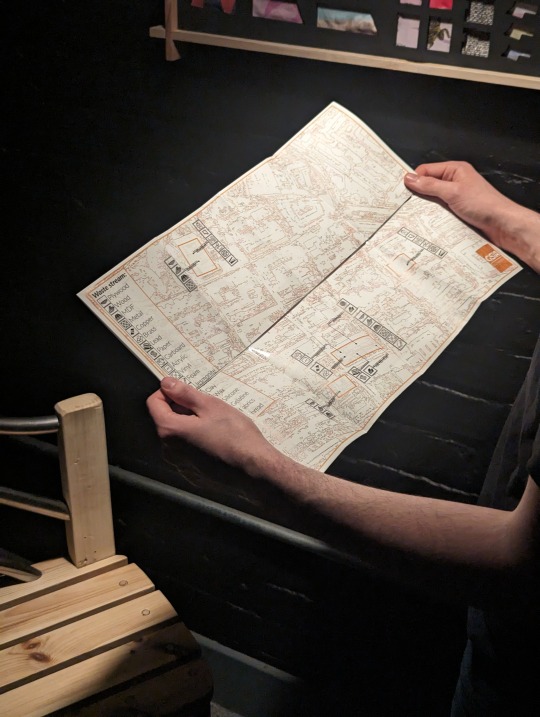
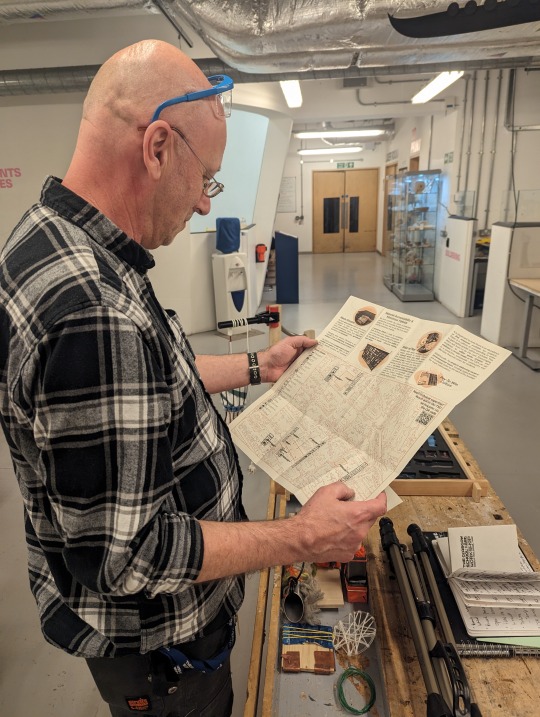
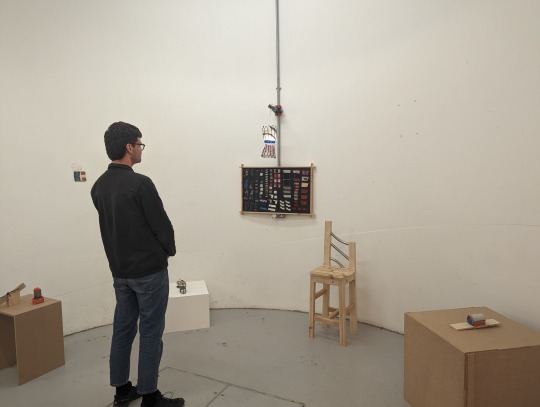


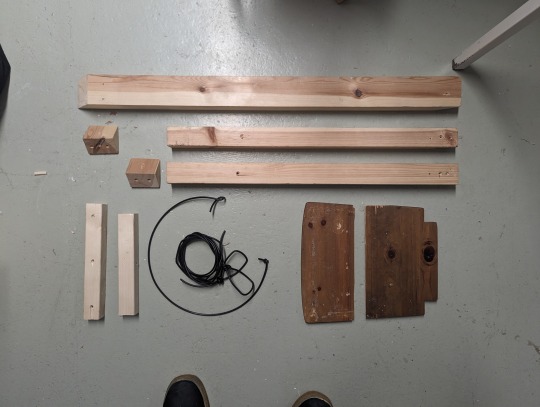

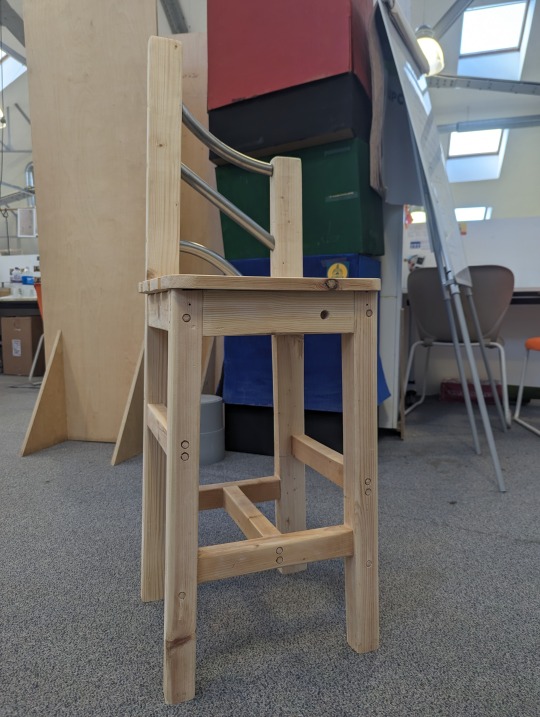

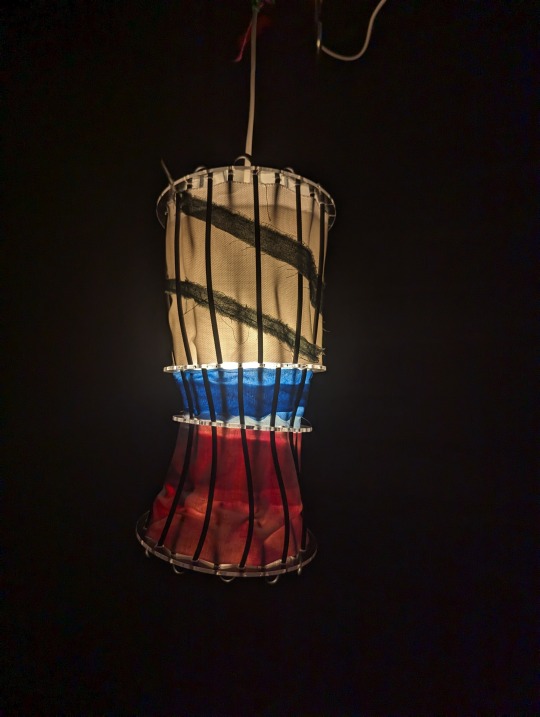


Analogue Intelligence: A portrait of the Glasgow School of Art through its waste.
Gareth Donaldson, Winner Sustainability Degree Show Prize 2024
I began this project by exploring waste streams in and around Glasgow in the hope of finding usable waste materials which would uncover design opportunities. My focus was to address issues of unnecessary waste and mass consumption with an aim to reshape the public perception of waste. The project challenges planetary degradation, planned obsolescence and materiality, with the purpose of contributing to circular design thinking.
By conducting primary research in the Southside of Glasgow, I hoped to gain an insight into my project direction. Interviewing people from industry as well as community interest groups I looked to shed light on waste production and consumption. I discovered that all of the community focused groups already considered their waste streams and understood the importance of mutually-beneficial relationships. As for the manufacturers and wholesalers, they didn’t seem interested in talking with me. I realised that Glasgow’s waste was too big a problem to tackle, so I decided to focus on more local waste streams.
Through the conversations around circularity and symbiosis in a real-world setting, I switched my focus to tackling the waste streams within the art school - specifically the workshops. I interviewed TSD staff to find out how waste is dealt with.
The only requirements from GSA are that general waste, paper recycling and some specialist waste must be disposed of correctly. On top of this, workshops do everything within their means to pass waste onto the relevant waste management specialists, although the outcome of said waste is unknown. Additionally, students require virgin materials because of their accessibility of use, time and cost. ‘Waste’ materials require extra work and are harder to use. Moreover, students aren’t really aware of what free materials are available.
I saw an opportunity to design a system for the art school, which connects usable waste streams between workshops and students. I also designed a series of artefacts to demonstrate how waste materials could be utilised for projects and to provide a social commentary on the pay-to-win mentality at GSA.
It was paramount that I set out parameters for myself to ensure I upheld my own beliefs and didn’t perpetuate the problem, these were: no cost, GSA specific, no monstrous hybrids and minimal machining.
As well as providing a culture for using waste, my project was intended to be a fully circular making methodology. I ensured that I demonstrated product impermanence and material reconstitution by showcasing artefacts broken down into their materials, in hopes of illustrating a circular design ethos in my making.
I named my project analogue intelligence. The project is about the value of play and tacit knowledge, which is antithetical to artificial intelligence - this antithesis inspired my redefinition of AI. The collective knowledge and the very human experience interwoven into the fabric of this project was something I did not want to shy away from.
Analogue intelligence is a culture of circular making at the GSA. The system takes the form of a booklet and waste map which highlight the opportunities for resource sharing: encouraging discussion about product impermanence and material accountability. Each artefact I designed symbolises a facet of the GSA. I made an art piece, a lamp and a workshop stool, all from waste sourced within the art school. The three artefacts represent the art, design and workshop departments and signify beauty and abundance in waste. My parameters guided the design of all elements of this project, waste materials cost nothing and I ensured that I made everything by hand, without creating monstrous hybrids.
Analogue intelligence is also a yearly exhibition held in the Reid void space, showcasing artefacts made from waste that prioritise play and creativity. The exhibition is concluded in a dismantling ceremony where participants de-construct their work and return materials to the waste hubs.
Upon returning to the stakeholders of the project, they all noted the invaluable service it offers and could see it being a part of GSA’s legacy, so much so that they offered me the opportunity to take the project to completion. It is something John Ayers said was “in the works to be done within the next year”. Perhaps this project lives on in the form of a new role within the GSA - a sort of circular maker and student advisor, educating through play, making and waste consciousness - one that tows the line between the technical support and sustainability departments. This is a role I would love to take on myself should the opportunity arise.
In closing, this project has been an invaluable learning experience. Not only is it a topic which has long interested me, but one that I’ve come to appreciate so much more. I have realised there is so much nuance in waste that I had not previously known. Aspects such as the value of play are often forgotten in the formulaic setting of academia. This project can highlight their importance and impact how design is taught. I have always been told: let the design guide the material choices. Maybe, this is not always the answer. Perhaps the materials available to us and in abundance, including waste materials, should be guiding our future designs.
In an ideal world, this project could become a framework that is implemented into other art schools or even further its legacy into the wider realm of creative practice.
Link to project
Connect with me
#climate crisis#sustainability#circulareconomy#ethics#zerocost#workshop#glasgow#glasgow school of art#waste#manufacturing#design#designinspiration#reuse#recycling#wood#analogue
1 note
·
View note
Text
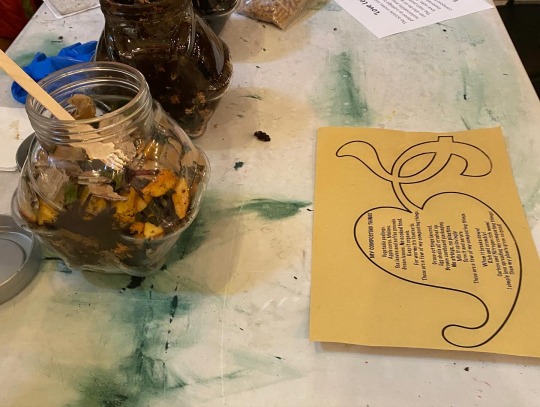



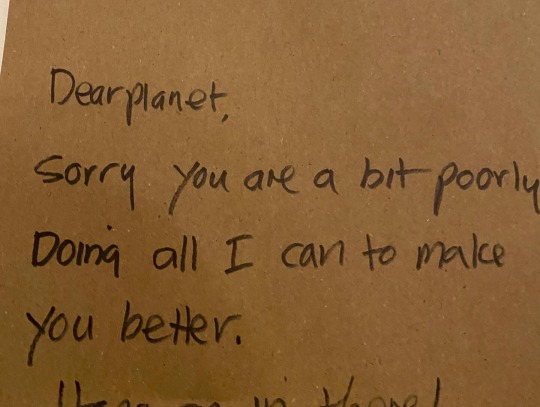
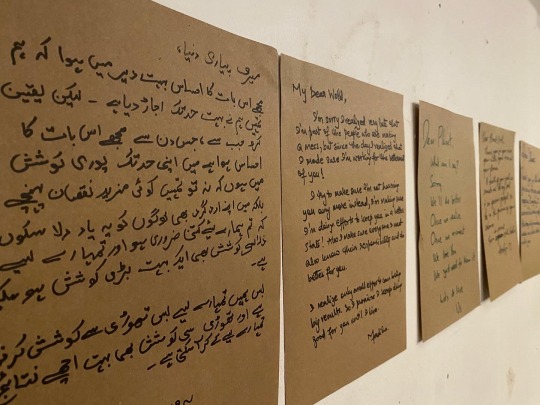

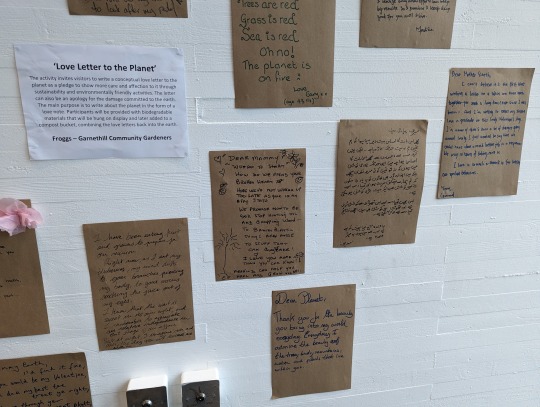
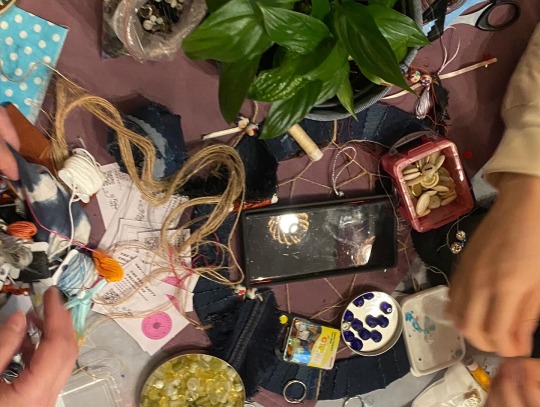
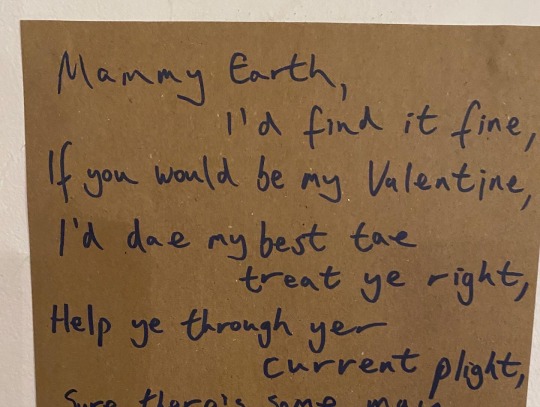

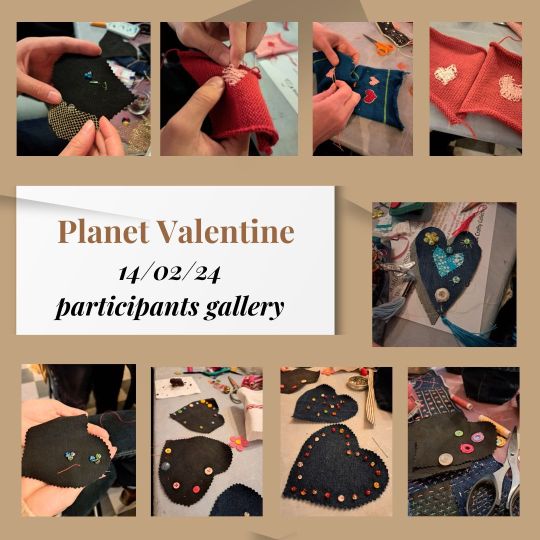
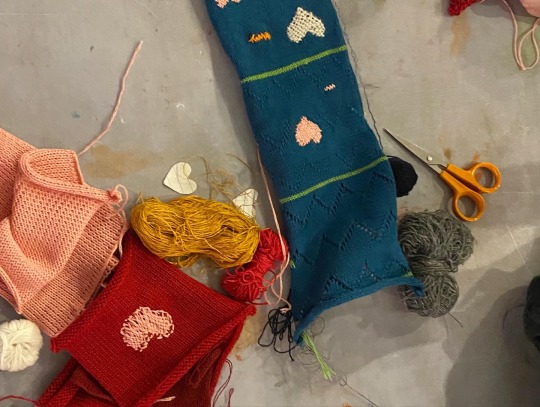

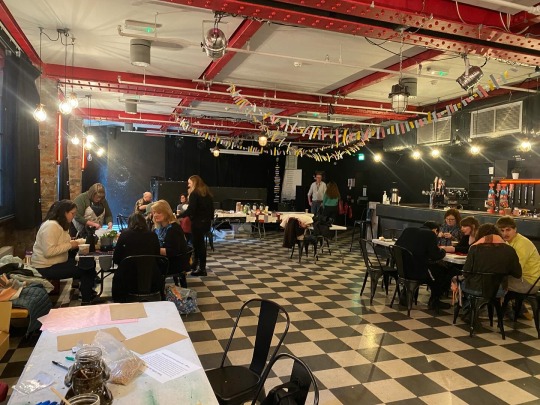
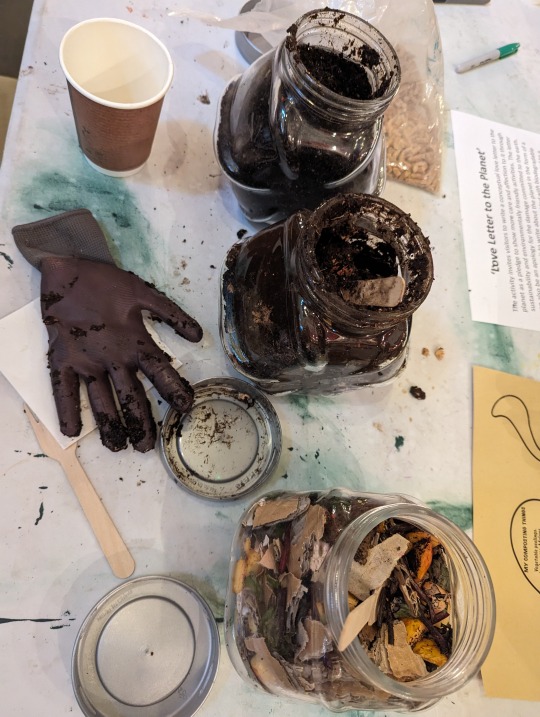


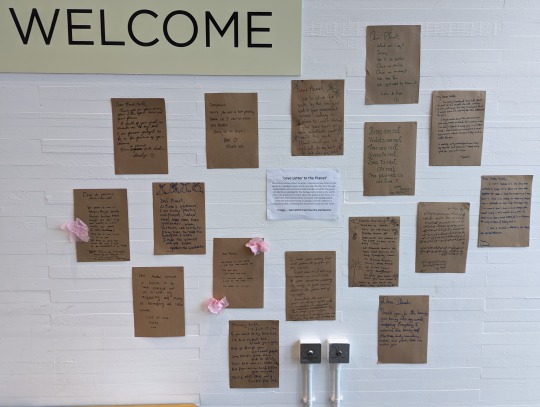




On Valentine's Day we showed the Planet some love and teamed up with GSA Crafty Collective, Friends of Garnethill Green Spaces and GSA Community Engagement and GSA Student Support to create some fantastic art and mending. Along with more than a few Love Letters to Planet Earth, now displayed in GSA's Reid Café.
#crafting #mending #garnethill #glasgow #glasgowschoolofart
0 notes
Text




“How green is my school?” Support for PhD Fieldwork in Scotland and New Zealand Julia Römer PhD Researcher, School of Innovation and Technology, GSA (2024)
In my PhD research, I’m looking into pupils’ sustainability perceptions from their own lived learning experiences - in Scotland and New Zealand primary education. More on the work here
0 notes
Text
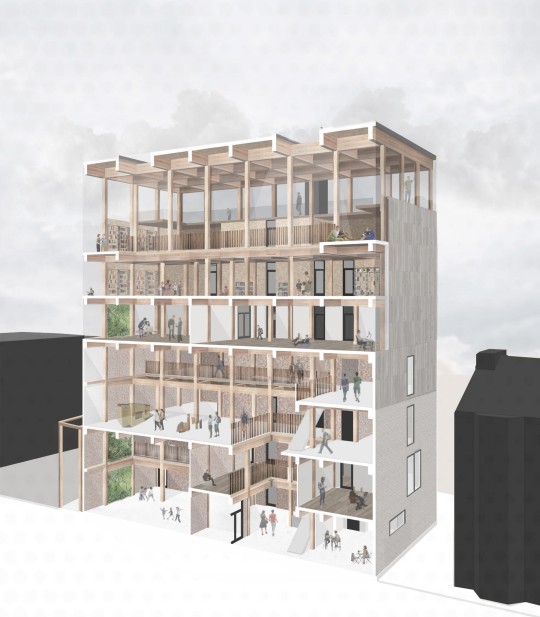
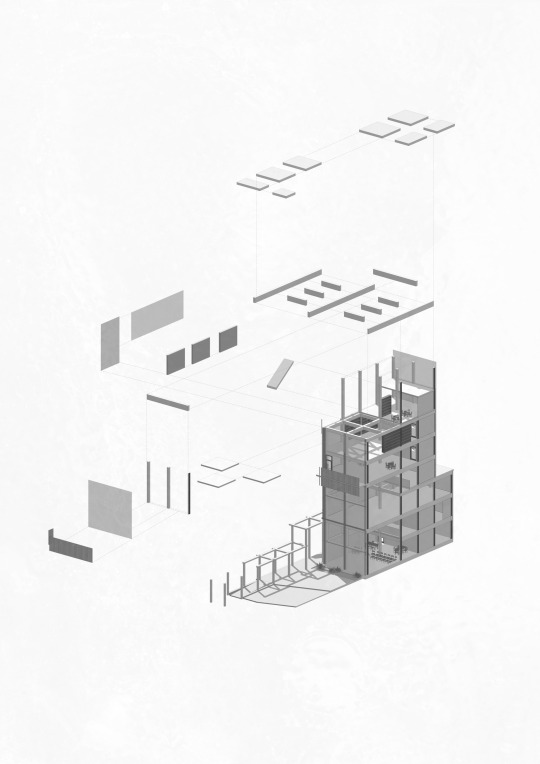
Laura Gorman, Winner MSA Stage 4 Sustainability Prize 2023
Disassembly
In times of the climate crisis, change on a macro scale is what needs to be addressed to make a more significant change to the world. In terms of the built environment, which is a prominent contributor to the world’s carbon emissions and unnecessary wastage, there is an urgent need for resource-efficient structures.
Sustainable Construction Methods
The present approach to the removal of materials features a linear economy model referred to as “Take-make-use-dispose”. Excessive overconsumption and limited resources has rendered this model unsustainable. The circular economy of materials involves the characteristics of products and they should be designed with a vision of: higher efficiency; improved durability and easier means of repair and disassembly.
Methods for improving the material flows and the circulatory system of buildings are urgently required to reduce waste production in the construction industry and to design more consciously with the environment as the focus. Attention should be concentrated on adapting ways in which people view design from a sustainable perspective. The process of designing for disassembly is a key method that uses design as a tool for a high material reuse and adaptation.
Design for Disassembly
Ensuring the extended life cycle of materials and circular economy of buildings needs the consideration of the disassembly of a structure into its retrospective components. The concept of DfD (Design for Disassembly), has been around for some time and has been shown to help minimise wasteful materials during construction and allows for reuse and relocation.
A Building for Disassembly : The Home-grown Library
This project has 2 key drivers, 1 is having the ability to be disassembled and 2 makes use of the abundance of locally sourced timber that Scotland has to offer. The UK is currently the 2nd largest importer of timber in the world for construction use, all the timber from Scotland is used for mainly non-structural applications. Initiatives are already in place to encourage home-grown Scottish timber use and this project makes use of the large Sitka Spruce population around the country.
This high rise timber library acts as a landmark in Pollokshields and a free/heated space for the residents, especially during this time with the cost of living crisis. The building itself showcases its structure, which is able to be taken apart and hosts a variety of spaces, for reading, learning and exhibiting sustainable construction – one of its key spaces. The building is topped with a double height library space which has 360 degree views of the city. The library acts as a building of importance at the top of Maxwell square – a place that seems unloved and underutilised.
Structure and Forms
Easy dismount design for timber framed structures, as show in this project, can be made readily demountable through simple forms and structures, resulting in higher levels of recyclability. The process helps to increase a building's circularity by improving material flows and optimising a component's end of life location.
The designing of component connections needs to maximise the use of screws, bolts/plates with minimal/no use of nails, glue and chemical applications. The careful assessment of the types of connections is a fundamental concept, defined by the nature of the building. Nails can pose damage to the surrounding material upon disassembly and glue/chemical applications can result in splitting and breakages.
Materials Passport
This project features ‘information related to the building’s materials, components, and products’ along with the future journey of the materials after disassembly.
Much like a LEGO™ instruction manual, the materials passport breaks down all the individual components and highlights their locations within the building for easy identification and future disassembly or maintenance. The use of Material Passports within projects identifies the responsibility of the supplier for the materials end of life location. Thus, allowing higher quality goods to be involved within the materials cycle.
Conclusion
The design for disassembly method presents promise within the construction industry, with its principles being involved with several projects today. Even if these projects are acting/acted as exhibitions and demonstrations in Scotland and the rest of the world, this is a start with embedding the process of DfD within designers minds and hopefully providing a positive change for the future of the industry.
To achieve these goals, Scotland is re-evaluating its use of materials and is utilising the convenience and low carbon method of harvesting and manufacturing homegrown timber. Building with homegrown Scottish timber should be made common practice for the construction industry along with the consideration for this timber's lifecycle and demountable ability.
Email
LinkedIn
Instagram
0 notes